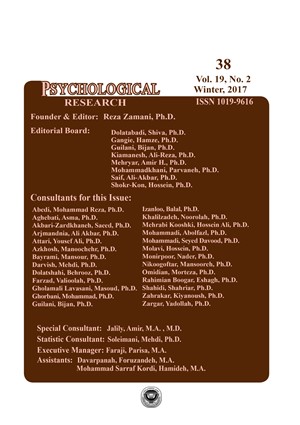-
-
List of Articles
-
Open Access Article
1 - Comparison of the Effect of Group Behavioral Activation Treatment and Group Cognitive Therapy on Positive and Negative Emotions, and Emotional Regulation Processes
mehdi Soleimani -
Open Access Article
2 - Relationship of Work-Family Conflict and Spillover with Psychosomatic Complaints Considering the Mediating Role of Work Anxiety
mohsen Golparvar -
Open Access Article
3 - Comparison of the Ideal and Actual Affective States of Opiate-Dependent Addicts and Non-Addicts and Their Relationship to Personality Characteristics
S. Said Pournaghash Tehrani -
Open Access Article
4 - Effectiveness of Social Problem Solving Strategies Training on Self-esteem in Second Grades of Guidance Schools Female Students
Azam A Hosseini Kafi Abadi -
Open Access Article
5 - Effectiveness of Coping Therapy in Reducing Behavioral-Emotional Problems of Children and Maternal Stress of Their Mothers
maryam roshan
-
The rights to this website are owned by the Raimag Press Management System.
Copyright © 2017-2026







